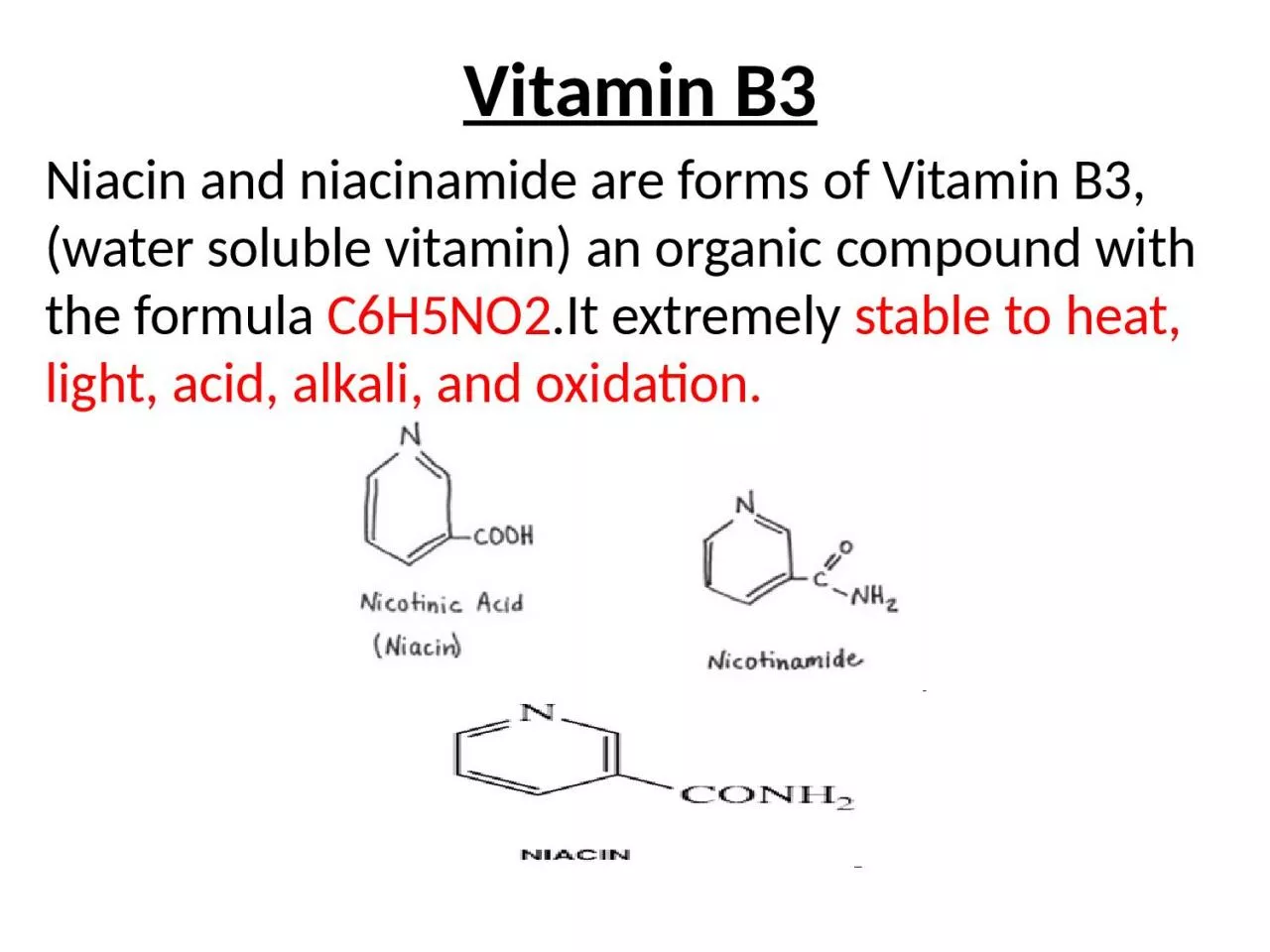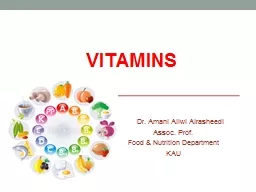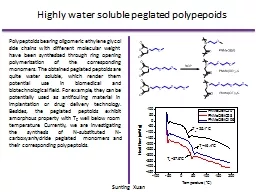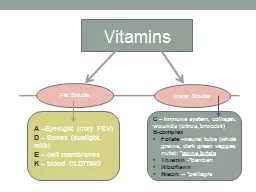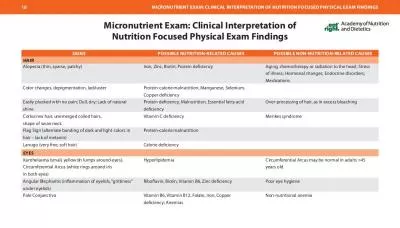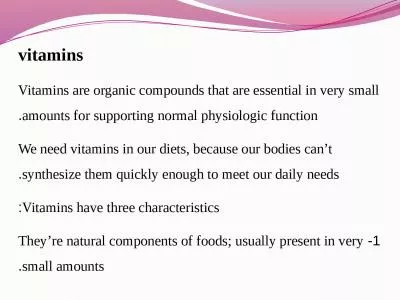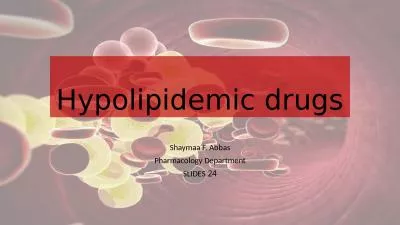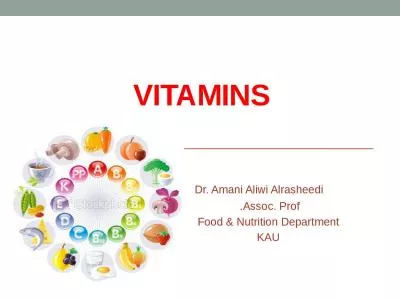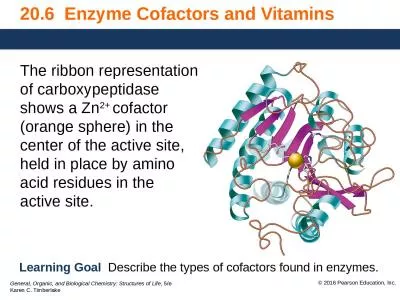PPT-Vitamin B3 Niacin and niacinamide are forms of Vitamin B3,(water soluble vitamin) an organic
Author : ash | Published Date : 2022-06-11
C6H5NO2 It extremely stable to heat light acid alkali and oxidation Niacin is a precursor to NADNADH and NADPNADPH which play essential metabolic roles in
Presentation Embed Code
Download Presentation
Download Presentation The PPT/PDF document "Vitamin B3 Niacin and niacinamide are fo..." is the property of its rightful owner. Permission is granted to download and print the materials on this website for personal, non-commercial use only, and to display it on your personal computer provided you do not modify the materials and that you retain all copyright notices contained in the materials. By downloading content from our website, you accept the terms of this agreement.
Vitamin B3 Niacin and niacinamide are forms of Vitamin B3,(water soluble vitamin) an organic: Transcript
Download Rules Of Document
"Vitamin B3 Niacin and niacinamide are forms of Vitamin B3,(water soluble vitamin) an organic"The content belongs to its owner. You may download and print it for personal use, without modification, and keep all copyright notices. By downloading, you agree to these terms.
Related Documents

